Shrubs are a major element in just about any landscape design, but knowing how they fit into the overall garden scheme and having knowledge of shrubs beyond the handful of traditional go-to’s is key. In this post, we’re going to take a closer look at the wonderful world of shrubs and how to break out of the “same-old, same-old” shrub selection rut.
It’s important to remember that every landscape design can be broken down into five essential layers that can help you plan your work and make better decisions about what to plant and where. The shrub niche is number three in the layering system and it’s a large one. It spans a broad height range that enables you to expand your shrub pallet beyond the usual rhododendrons, azaleas, and boxwoods that we see so often in a typical residential landscape. However, because there are so many choices that can be made, it can be a little overwhelming.
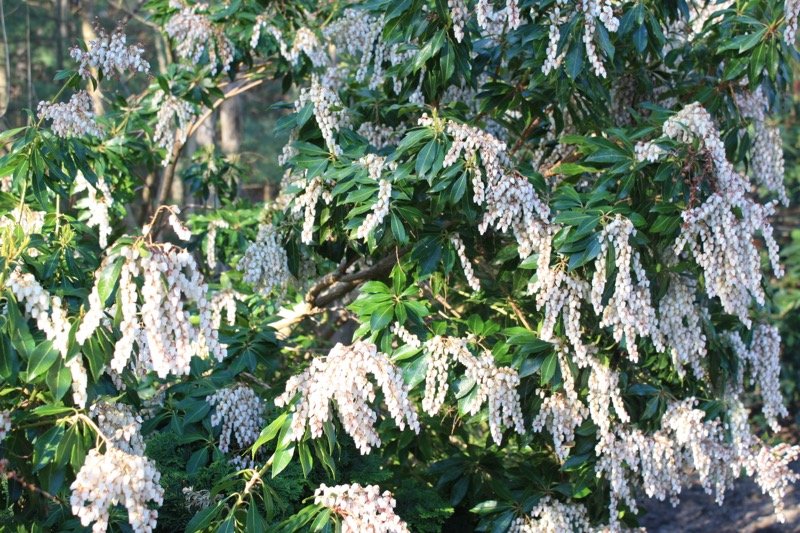
Pieris japonica
Start with the shrub’s function
When you’re choosing shrubs, think first about the plant’s function in your landscape before you choose for aesthetics. For example, if you need something to provide year-round coverage, that’s where you start your selection process. If your goal is to create a pop of color, that’s something else entirely. And if you’re intent on using only native species, that will help you narrow down your focus even more.
Make knowledgeable, not knee-jerk, decisions
Once you’ve determined functionality, you’re ready to begin narrowing your choices down even more based on your knowledge of what will work best in your environment, not just on what you see walking through the nursery.
Whenever choosing to purchase a shrub that’s new to you, consider researching it beyond the nursery tag. An excellent way to do that is to check with your local land grant university or a botanical garden in your planting zone. Many of them have useful online resources. I regularly use the Missouri Botanical Garden online plant finder. They post more accurate, in-depth information about the plant’s features, benefits, and problems. This is important because the information on those little tags attached to shrubs can be misleading. It’s well worth doing a little digging on your own and taking the time to understand the information you find.
Ask questions. For example, is a particular shrub prunable? This can be important because many shrubs will outgrow the area in which they’re planted. Take Spirea, for example: this shrub can be pruned vigorously and rebound nicely even when trimmed by a novice. However, a Viburnum will not accept major pruning by an untrained hand very well and can become easily deformed. Any shrub that is labeled “useful as a hedge” is prunable. A little bit of knowledge like that can go a long way.
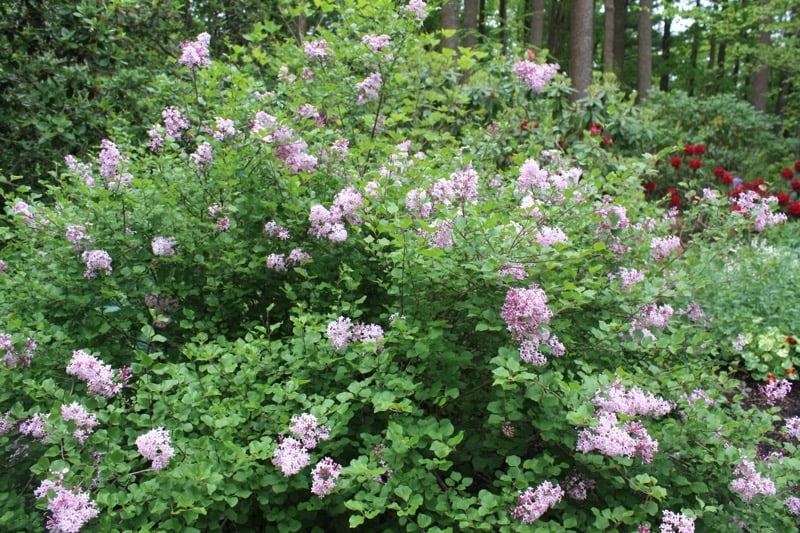
Syringa meyeri 'Palibin'
Time to try something different.
Every designer has their preferred plant palette. While that’s totally okay, I think it’s also important to stretch a little bit. It’s really interesting to me how so many new landscapes sport the same “go-to” standard shrubs over and over again when there are so many interesting options available.
You know the ones I’m talking about: boxwoods and yews for evergreens… rhododendrons and azaleas for flowering shrubs that hold their leaves through winter… hydrangeas and roses for “wow factor” flowers.
Don’t get me wrong, I use them all, yet there are so many other shrubs from which to choose that also offer beautiful textures, flowers, fragrances, and even berries. Why not consider some of these lesser-known varieties for that spot in your landscape that needs a boost?
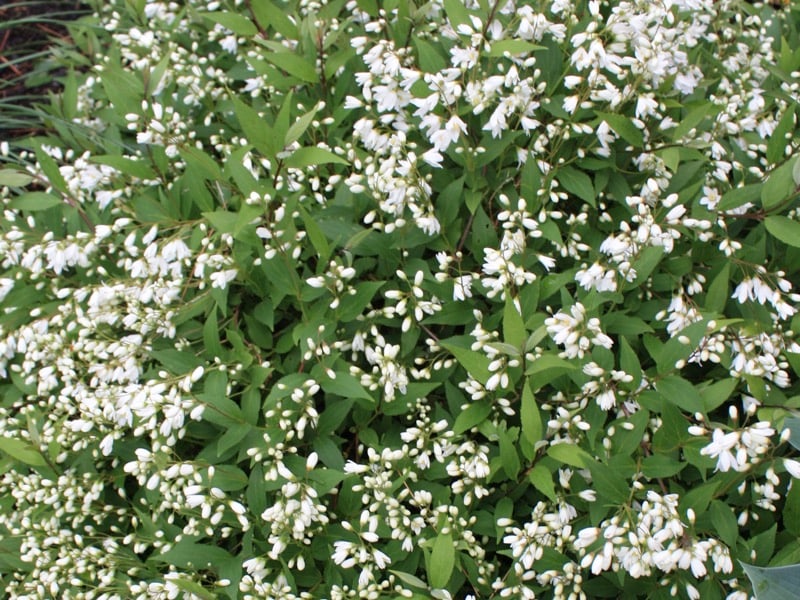
Deutzia gracilis 'Nikko'
Here are what I consider terrific choices for just the right spot in your landscape:
Year round foliage (all deer resistant):
- Cephalotaxus harringtonia - if you want to use Taxus and can’t because of deer browsing, this is the plant for you. It comes in two variations: spreader and upright. The needles have a velvety green texture.
- Leucothoe axillaris - this weeping gem will cover some ground and sport some great foliage colors as well as creamy white flowers..
- Microbiota decussata - a graceful evergreen with arching soft branches that will spread in a part shade to shade areas.
- Picea pungens ‘Glauca Globosa’ – if you want some blue/gray in your garden, this is it. Give it sun and space, though. It’s a slow grower but you don’t want to have to transplant it.
- Pieris japonica - deer getting your rhodies and azaleas? Here’s your answer, with beautiful arching flowers in spring. This is not for the sun (a common mistake). Keep it in part sun, part shade to shade.
- Pinus strobus ‘Nana’ - a great anchor in the garden with its soft green needles. Give is space and sun so it will become majestic with age.
Seasonal color pop - some of my top faves for flowers and fragrance:
- Daphne x burkwoodii ‘Carol Mackie’ - a gem with beautiful variegated foliage and the sweetest smelling flowers. Not so easy to prune, so plan for growing room.
- Deutzia gracilis - a low spreader that will fill space and smother weeds while sporting white or pink spring flowers and beautiful burgundy fall foliage. Very easy to prune after it flowers.
- Hydrangea quercifolia - a nice break from the blue balled selections, this hydrangea has big cone-shaped flowers and amazing fall color. It will fill up a big space after about three years of establishment time.
- Syringa meyeri ‘Palibin’ – I love this non-native. If you want easy-to-manage and a lilac with fragrance and no powdery mildew, this is the one. Extremely easy to prune to shape and can be hedged.
- Viburnum carlesii – this has always been one of my favorites for fragrance. The foliage can be disappointing in the late season, so keep it in the back. But the flowers and fragrance in the spring are to die for!
Native species (Northeast region) - Our local Land Grant school is the University of Massachusetts, which publishes a New England List of Native Shrubs. Some other research sites include the National Wildlife Federation (beta) to select shrubs by area, and the Audubon Society to pick plants that attract different types of birds.
Here are some of my New England native favorites:
- Clethra alnifolia - if you have big space near wetlands, go with the straight species. If you want to plant it close to the house and really enjoy the fragrance, go for some of the smaller hybrids. Pink or white flowers.
- Comptonia peregrina - not technically a shrub, this fern grows on woody stems which stay up all winter. Great for filling in a dry slope or transition area. It’s also a medicinal herb that can be useful to soothe a poison ivy rash.
- Hamamelis virginiana - wonderful choice if you want a surprise of yellow in the springtime. There are other varieties of witch hazel that sport copper or red flowers.
- Itea virginica - a workhorse of a plant that will sport a waterfall of white flowers and soft fragrance and then burst with rich burgundy fall foliage. Some cultivars are available that are smaller and fit the residential scale.
- Rhus aromatica - the perfect plant for problematic slopes that need stabilization. Plant it in rough soils, water well, and let it run. The fragrant white flowers a are followed by vigorous foliage and then bright red fall color. This one will take off and get huge, so it isn’t well suited to small areas. It needs to run!

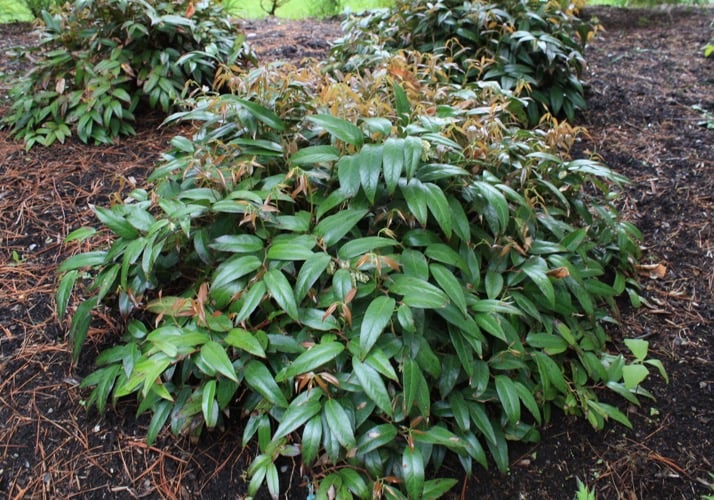 Leucothoe axillaris
Leucothoe axillaris
It’s okay to make mistakes.
I’ve provided a number of resource links in this post to help you learn more about shrub choices and selection. There are certainly a number of other resources you can find online and in your community. I strongly encourage you to spend a little time getting more familiar with shrubs and their potential so you can make the best, informed decision for your landscape.

TWEETABLE TIP
Whenever choosing to purchase a shrub that’s new to you, consider researching it beyond the nursery tag.
VIA @GardenContinuum

Whatever you do, don’t worry about making a mistake. That comes with the territory as you try different things. Remember, if you follow the layering system and employ structural considerations in your shrub selection, it’s going to take about three years for your shrubs to settle in (acclimation) and stabilize (establishment) in your particular landscape environment. That means you won’t know for a while if a specific shrub is in a good place or if it needs to be moved. Planting shrubs is an exercise in eco-balancing – finding a plant that fits well in the place where you want it without needing extraordinary care to help it stay there. Mistakes may be made but I guarantee there will be fewer mistakes if you do the research that I’m suggesting.
Accept that any garden and planting is a living work-in-progress. There are always constraints that have to be accommodated, such as space, light or water limitations along with many other considerations. We are almost always working with finite space in the residential landscape. You simply won’t find plants that “fit” perfectly which is one of the reasons why pruning is so important. You should learn how to do it well yourself or hire a professional to do it for you.
If you’re able to make good, informed decisions about shrubs before you even purchase them and definitely before you plant them, you’ll enjoy a beautiful garden year-round that will minimize maintenance needs and maximize pleasure and satisfaction. If you would like to learn about plant selection beyond shrubs, consider downloading the ebook "Demystify Your Landscape: Picking Plants."
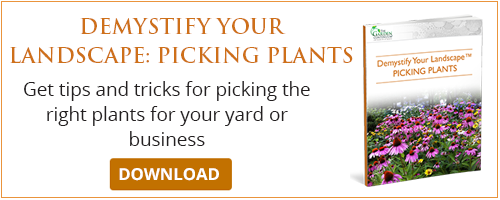
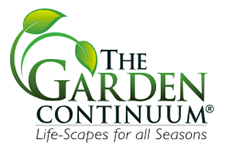
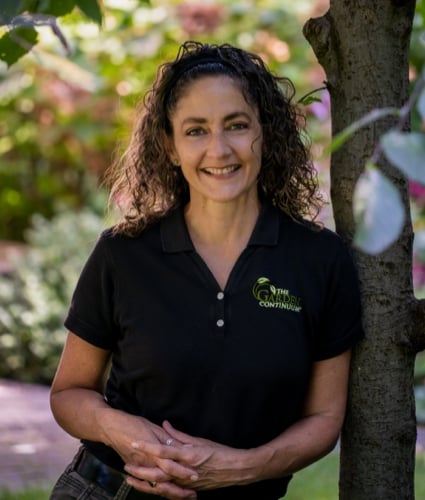
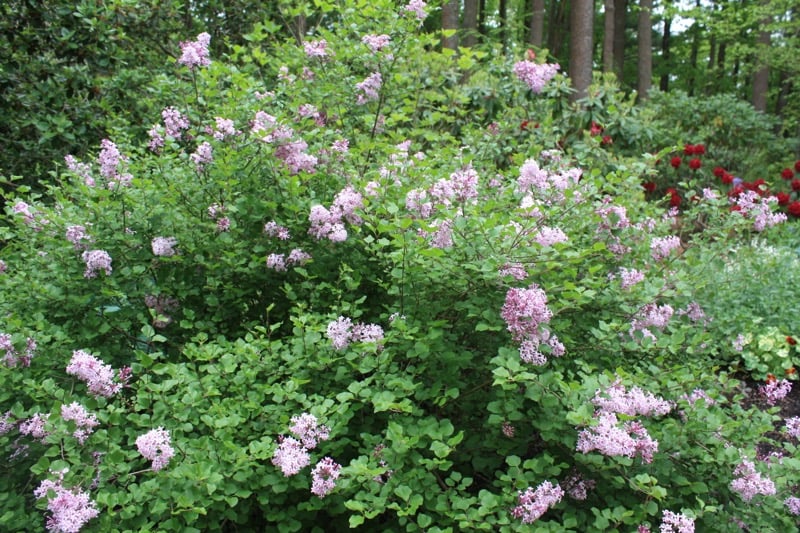




 Leucothoe axillaris
Leucothoe axillaris


Leave a comment